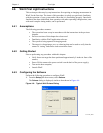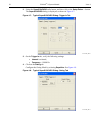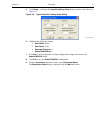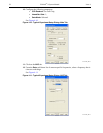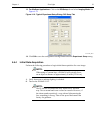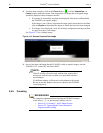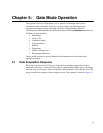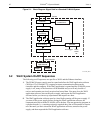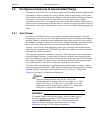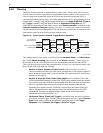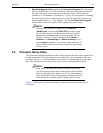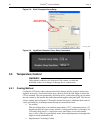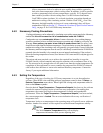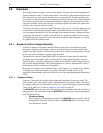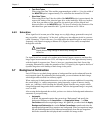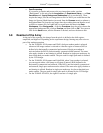
Chapter 5 Gate Mode Operation 63
5.3 Pre-Exposure Removal of Accumulated Charge
The purpose of the CCD array is to acquire a signal of interest that can then be digitized and
transmitted to the host computer for storage, display, and post-processing. It will acquire
signal whenever the camera has power, whether or not the intensifier is being gated to take
an exposure. If the intensifier is off, dark charge will be the main source of signal
accumulation on the array. To counteract this, clean cycles and continuous clean cycles are
used to remove the dark charge while the camera is waiting to acquire the signal of interest.
Dark charge, clean cycles, and continuous clean cycles are described in the paragraphs that
follow.
5.3.1 Dark Charge
As soon as the PI-MAX4 camera is powered on, thermally-induced charge will begin
integrating on the CCD array even if the photocathode is biased off. Because dark charge is
thermally-induced, reducing the array temperature significantly reduces the rate at which
this charge accumulates in the pixel wells. Even so, enough dark charge could accumulate in
the pixels between data acquisitions to affect dynamic range at the beginning of an
exposure. To prevent this from happening, clean cycles repeatedly shift and discard any
signal that has integrated on the PI-MAX4 array while it is waiting for a Start Acquisition
command from the host computer.
After the Start Acquisition command is received, a final clean cycle occurs and exposure
begins. During the exposure, both the signal of interest and dark charge integrate on the
array. The longer the exposure and the warmer the camera, the larger and less uniform the
dark charge will appear. To minimize the dark charge contribution to the acquired signal,
you should operate with the lowest temperature possible for your camera.
To further reduce the dark charge contribution to an acquired signal, you may be able to
perform background subtraction, which subtracts a dark charge background from raw data
acquired using the same experiment conditions. Refer to Section 5.7, Background
Subtraction, on page 69 for additional information.
NOTE:
Do not be concerned about either the DC level of this
background noise or its shape unless it is very high, i.e., > 1000
counts with 16-bit A/D. What you see is not noise. It is a fully
subtractable readout pattern. Refer to Section 5.7, Background
Subtraction, on page 69 for additional information.
WARNING!
If a sudden change in the baseline signal is observed, there may be
excessive humidity in the camera's CCD enclosure. Turn off the
controller
IMMEDIATELY. Then, contact Princeton Instruments
Customer Support for further instructions. Refer to Contact
Information on page 312 for complete information.



